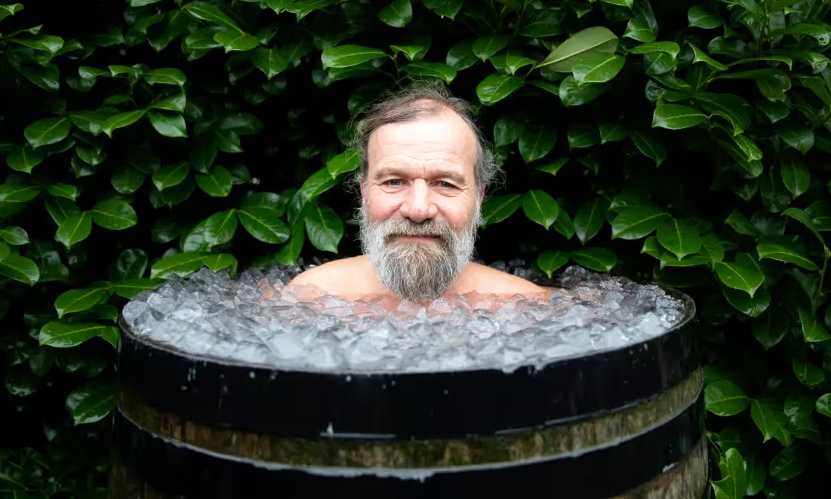Adrenaline release thought to dampen inflammation, but experts say method ‘not without risks’

The physical and psychological advantages of techniques like taking ice baths or purposefully holding their breath while hyperventilating are highly valued by followers of “The Iceman” Wim Hof. According to a recent research, they could really lower the body’s inflammatory levels. Experts emphasize that there are risks associated with using the Wim Hof approach.
Hof is a Dutch sportsman who broke records by running barefoot on ice and snow and swimming beneath it. In more recent times, he has created a global commercial empire around his methods, which center on a dedication to learning mindful breathing and cold exposure. His courses are offered all over the globe.
Although earlier research has attempted to evaluate the physiological and psychological effects of these methods, it has often been conducted on too small a sample size to make definitive findings. Thus, in an effort to find recurring patterns, Drs. Omar Almahayni and Lucy Hammond of the University of Warwick thoroughly examined the data from eight published experiments.A research indicates that the Wim Hof breathing and cold-exposure approach may be beneficial.
According to their research, which was published in PLOS ONE, the main alterations seen in individuals using the Wim Hof approach were a decrease in pro-inflammatory cytokines and an increase in the stress hormone adrenaline as well as anti-inflammatory cytokines. The effect on exercise performance was less evident; although some studies found no significant change, others found improvements in breathing intensity, for example.
The research offered “valuable insights into [the method’s] potential as a complementary approach to wellness,” according to Almahayni and Hammond. They did, however, note that further investigation was required into how it affected stress, inflammation, and general health.
“I think it is still early days to make a balanced scientific judgment about what the method might and might not do,” stated Dr. Matthijs Kox, an immunologist at the intensive care unit of Radboud University Medical Center in the Netherlands. “As far as inflammation goes, I think we’ve now got quite convincing evidence that it has the ability to dampen inflammation in an acute, i.e short-term setting.”
According to his studies, Hof’s breathing methods cause a significant quantity of adrenaline to be released, which is a crucial part of the fight-or-flight response. Since adrenaline is known to reduce inflammation, he thinks this may be the underlying reason. According to Kox, breathing techniques and cold immersion training may also help individuals tolerate more pain.
“I believe the next step should be to see if patients with a chronic inflammatory condition like rheumatoid arthritis benefit from the Wim Hof method in a randomised controlled trial,” Kox said.
Prof. Mike Tipton of the Extreme Environments Laboratory at the University of Portsmouth issued a warning, pointing out that the majority of the examined research contrasted the effects of using the Wim Hof approach with doing nothing. “If there weren’t differences between a group that does nothing and one that trains for eight weeks, or two hours a day for four days, one would be surprised,” he said.
“This methodological technique provides no information on the relative advantages when compared to other programs like yoga, indoor swimming pools, daily walks of 30 minutes, or soccer. This is significant since there are hazards associated with the Wim Hof approach. This would be wise if a lower-risk activity could provide the promised advantages.
He went on to say that there was room for debate over the Wim Hof method’s universal safety: “For instance, standing in the snow barefoot for 30 minutes introduces the risk of cold injury.” There is an increased danger of drowning and heart issues when diving into cold water.
Tipton emphasized that anybody thinking about engaging in such behavior should speak with a doctor beforehand. They should also take further precautions to guarantee their safety, such as exiting cold water as soon as they feel discomfort, numbness, or shivering.


